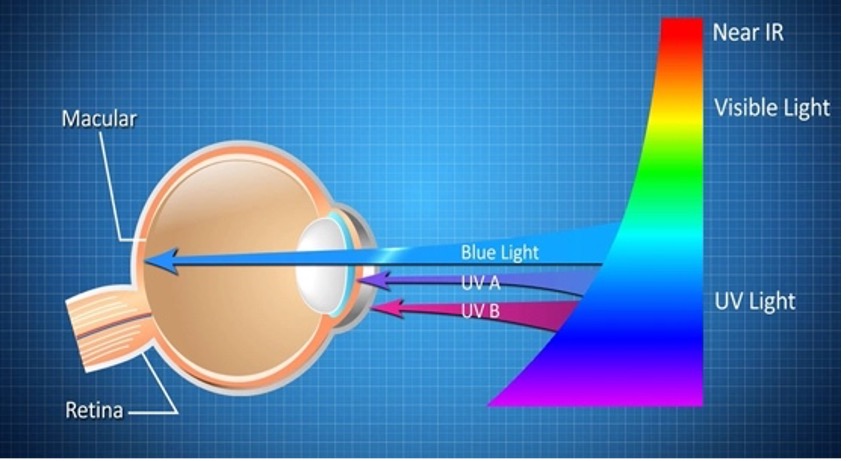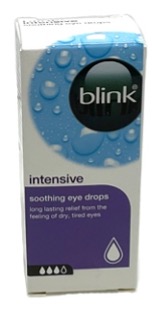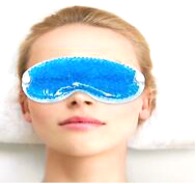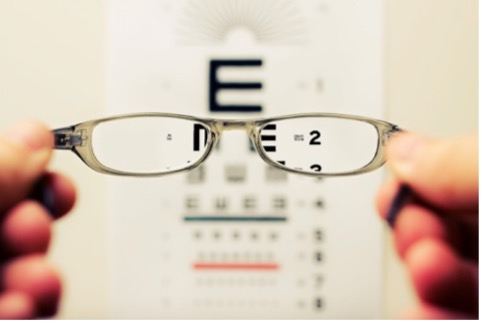Eye strain can be uncomfortable and affect your work. Find out how to avoid it with Designer Glasses.
The world of work has changed forever. It’s estimated that by 2025, 70% of the global workforce will work remotely. While this comes with various benefits for employees across various industries, the new working-from-home economy comes with a few drawbacks, including an increased risk of eye strain.
Many companies will ask their staff to continue working from home for the foreseeable future, so it’s important to be aware of the factors contributing to poor eye health. So what is eye strain, and how can you avoid it when working from home?
What Is Eye Strain?
Eye strain is a broad term that describes many problems associated with eye discomfort. It’s a common condition that arises when your eyes get tired from intense use. Eye strain has become a lot more prevalent since most people started working from home due to increased screen time. Symptoms of eye strain include:
- Itchy or sore eyes
- Watery eyes
- Blurred or double vision
- Headaches
- Light sensitivity
- Difficulty focusing
- Feeling like you can’t keep your eyes open.
It usually isn't serious and will go away once you rest your eyes. However, continual, repeated eye strain might cause significant problems with your ocular health and affect your visual acuity. So how can you avoid it if you’re working remotely?
How to Avoid Eye Strain When Working from Home
While you might have eliminated your morning commute, it was a chance for your eyes to take in some alternative surroundings. Now, it’s much easier to roll out of bed and spend your whole day in front of screens.
Spending too much time staring at your computer, laptop, television, smartphone, or other digital devices can wreak havoc on your vision. So let's look at a few ways you can improve your working-from-home set-up, promote healthy vision, mitigate headaches and avoid eye strain.

Set up Your Workstation Properly
Not everyone has an office, study or workspace at home. Many people have set up their desks in their bedrooms, dining rooms and kitchens, which aren’t ideal for extended work hours. Sitting in an uncomfortable position can lead to problems with your neck, spine, shoulders, and eyes. Therefore, it’s crucial to create a comfortable, ergonomic set-up to avoid a myriad of painful problems.
Whether you’re lucky enough to have a dedicated space at home or you’re making the best of the area you have, make sure that you sit up straight with plenty of lumbar support. Slouching can lead to back pain, but it can also mean you’re looking at your screen at an angle, putting more strain on your eyes than necessary.
Position Your Screens Correctly
If your laptop or monitor is positioned incorrectly, your eyes will need to work harder to focus on what’s in front of them. If the screen you’re looking at is at an angle, too close, or too far away from you, eye strain is likely to occur after only a short time.
Most people sit too close to their screens, so to avoid eye strain, your computer or laptop screen should be positioned around 50cm to 75cm in front of you — about an arm’s length away. If your screen is any nearer, you’ll be overworking your eye muscles to compensate for the lack of distance between you and the screen. Your laptop or computer monitor shouldn’t be off to one side either, as your body will be in a contorted position, leading to numerous aches and pains.
Put Yourself in the Right Position
The top of your screen should be at eye level, meaning that you’re looking ever so slightly downwards at your laptop or desktop monitor while working. This helps reduce eye fatigue, as the muscles around the eye don’t have to work so hard to focus. Try adjusting the height of the table or the screen, or changing the height of your chair. This will help you avoid craning your neck or tilting your head too much to see what you’re working on.
If you wear varifocals, you might experience problems concentrating as you move your head position to get the correct focus. In this instance, Essilor Office Lenses are a better option. The top half of the lens focuses on a metre more in the distance than the lower part of the lens, which retains power for closer work.

Let Some Light in (but Not Too Much)
Light has a significant impact on our concentration, alertness and productivity. The more natural light that’s available, the more awake we feel. If you don’t have many natural light sources at home, it can feel like you’re working in the dark, which is bad for your vision. It might be tempting to turn up your screen brightness, but that can only serve to bring on eye fatigue faster.
While keeping your curtains or blinds open may let light in, it can cause glare on your screen, which can slow down your ocular-motor speed and negatively affect your vision. Try to find a spot in your chosen workroom where light isn’t directly shining onto your screen, into your eyes or reflecting too brightly off surfaces in your field of vision. If such a place is hard to find, daylight bulbs can simulate natural light and provide better-than-warm colour lamps, allowing you to keep your curtains, blinds or shutters closed.
Limit Your Screen Time outside of Work
The majority of people find themselves spending much more time on screens outside of work, as outdoor activities have been limited for such a long time. People’s habits have remained prevalent in the new working-from-home economy, so it’s important to break the perpetual screens cycle for entertainment.
This increased screen time is directly linked to increased eye strain for two main reasons:
1. Reduced Blink Rate
You tend to blink less when concentrating on digital devices. When the blink rate is reduced, your body produces fewer tears, which are vital in keeping the surface of your eyes moist. As a result, your tear film — the thin, protective layer of moisture produced by the myobium glands along the eyelid margins — is affected. Your eyes will be prone to becoming dry and sore when the corneal surface dries out, leading to red, itchy and painful eyes. This can even give a foreign body sensation to the eyes. Dry eye drops can help with this by restoring moisture to the eye’s surface.

2. Blue Light
Blue light has been a hot topic in ophthalmology. Sunlight is the major source of blue light, but digital devices also emit significant amounts. Prolonged exposure to blue light emitted from these devices has many experts concerned about possible long-term effects on the impact of blue light on eye health.
You can add blue light lenses to your glasses to combat the potentially damaging effects of blue light on the eyes and retina. At Designer Glasses, we offer two varieties of blue light and UV protection: the Pristine Blue UV lens coating and the Essilor Crizal Prevencia coating, where the protection is built into the electro-magnetic layer. Anti-glare lenses also have extra layers to help with condensation, smudges from fingerprints and fine abrasions.
Things You Should Do to Keep Your Eyes Healthy
There are few ways you can protect yourself against eye strain when working from home.

- Use the 20-20-20 Rule — Relaxing the muscles in and around your eyes is crucial. Every 20 minutes, you look at a device, take a 20-second break and look at something 20 feet away (or more). This helps give your eyes a rest from concentrating on one distance and stops your eye muscles from getting overworked.

- Think Blink — The eyelids are like windshield wipers. When you blink, they clear away dust and dirt and wash the surface of the eye with tear fluid. This is why it’s vital to stop working on screens at least once every one to two hours and close your eyes completely. This will effectively clear away any microscopic debris from your eyes, such as tiny dust particles and dead skin cells.
- Zoom In — If you are looking at small text on your computer for even part of your day, make things easier on your eyes by using the zoom function on your screen. Nearly all applications have this function, and it can greatly reduce eye strain. Try to avoid working from smartphones or tablets as they have smaller screens that exacerbate the problem.

- Take Regular Breaks — Going outdoors is proven to benefit your physical and mental well-being. It can significantly lower stress, but it also allows you to focus on objects much further away. This engages the eye muscles much more, compared to focusing at one distance for an extended period. It also reduces the pressure on and around your eyes, counteracting eye strain.
Use Eye Masks or Eye Drops — Eye drops can also help keep your eyes lubricated throughout the day, but you should only use them in moderation. Once eye drops are past their expiration date, throw them out, as they can make your dry eyes worse. You can use a heated or cooling eye mask. Masks can work wonders, relaxing the eyes and providing excellent relief from eye strain. They have many therapeutic effects and can often be reused.

- Get Your Eyes Tested Regularly — Thousands of people missed critical eye-care appointments over the past two years. This means that many people don’t have the right prescription glasses or are at risk of developing debilitating eye conditions that go unchecked. An outdated prescription won’t improve your vision enough to avoid eye strain, so get your eyes checked at least once every two years.
- Get the Right Glasses and Lenses — It’s essential to consider the kind of glazing you have on your prescription glasses, such as anti-glare or blue light protection. Anti-glare lenses will help reduce annoying reflections from bright light sources. However, blue light lenses go further and stop potentially harmful ultraviolet light rays from reaching your retina and impacting your eye health.
Looking after Your Eyes When Working from Home
For some, working from home has been a welcome change from long commutes and stuffy offices. While these aspects of people’s lives might have exacerbated some eye problems, eye strain is still prevalent when working remotely.
Computer glasses fitted with blue light protection added to the lenses can help combat eye strain and — if you know your latest prescription — can be ordered online. This will save you a trip to the opticians while guaranteeing the best price available. You can even try them on with our incredible Virtual Try-On technology, which will help you make the best decision to enhance your vision and style.
Discover our vast collection of designer glasses that can be fitted with the best blue light protection available, preventing eye strain and protecting your vision. Try on our most popular designer frames today.
Disclaimer: If you think your eyesight has deteriorated or changed, book a check-up with your local optometrist.
Author: Paras Patel Bsc(Hons) FCOptom — www.designerglasses.co.uk







